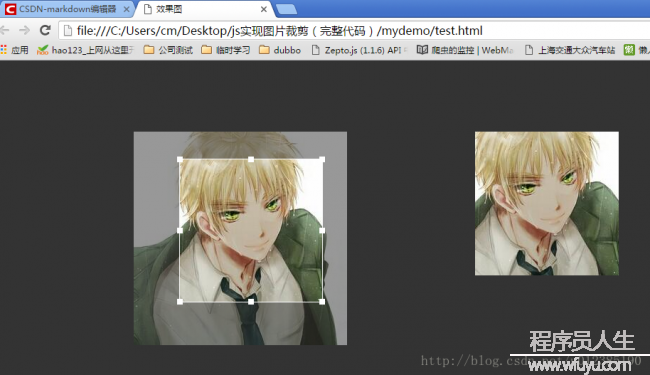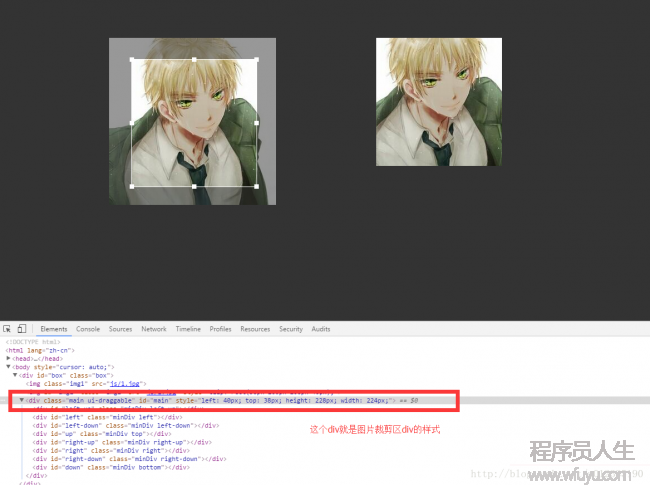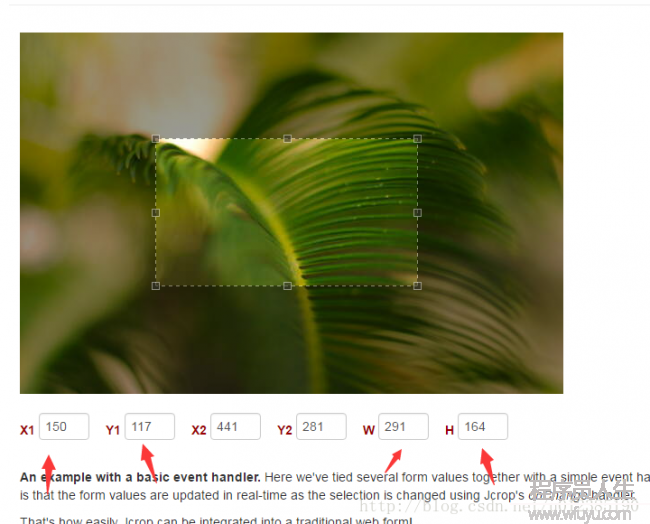在閱讀相冊的時候,可能需要生成相應的縮略圖。
直接上代碼:
public class ImageUtil {
private Logger log = LoggerFactory.getLogger(getClass());
private static String DEFAULT_PREVFIX = "thumb_";
private static Boolean DEFAULT_FORCE = false;//建議該值為false
/**
* <p>Title: thumbnailImage</p>
* <p>Description: 根據圖片路徑生成縮略圖 </p>
* @param imagePath 原圖片路徑
* @param w 縮略圖寬
* @param h 縮略圖高
* @param prevfix 生成縮略圖的前綴
* @param force 是不是強迫依照寬高生成縮略圖(如果為false,則生成最好比例縮略圖)
*/
public void thumbnailImage(String imagePath, int w, int h, String prevfix, boolean force){
File imgFile = new File(imagePath);
if(imgFile.exists()){
try {
// ImageIO 支持的圖片類型 : [BMP, bmp, jpg, JPG, wbmp, jpeg, png, PNG, JPEG, WBMP, GIF, gif]
String types = Arrays.toString(ImageIO.getReaderFormatNames());
String suffix = null;
// 獲得圖片后綴
if(imgFile.getName().indexOf(".") > -1) {
suffix = imgFile.getName().substring(imgFile.getName().lastIndexOf(".") + 1);
}// 類型和圖片后綴全部小寫,然后判斷后綴是不是合法
if(suffix == null || types.toLowerCase().indexOf(suffix.toLowerCase()) < 0){
log.error("Sorry, the image suffix is illegal. the standard image suffix is {}." + types);
return ;
}
log.debug("target image's size, width:{}, height:{}.",w,h);
Image img = ImageIO.read(imgFile);
if(!force){
// 根據原圖與要求的縮略圖比例,找到最適合的縮略圖比例
int width = img.getWidth(null);
int height = img.getHeight(null);
if((width*1.0)/w < (height*1.0)/h){
if(width > w){
h = Integer.parseInt(new java.text.DecimalFormat("0").format(height * w/(width*1.0)));
log.debug("change image's height, width:{}, height:{}.",w,h);
}
} else {
if(height > h){
w = Integer.parseInt(new java.text.DecimalFormat("0").format(width * h/(height*1.0)));
log.debug("change image's width, width:{}, height:{}.",w,h);
}
}
}
BufferedImage bi = new BufferedImage(w, h, BufferedImage.TYPE_INT_RGB);
Graphics g = bi.getGraphics();
g.drawImage(img, 0, 0, w, h, Color.LIGHT_GRAY, null);
g.dispose();
String p = imgFile.getPath();
// 將圖片保存在原目錄并加上前綴
ImageIO.write(bi, suffix, new File(p.substring(0,p.lastIndexOf(File.separator)) + File.separator + prevfix +imgFile.getName()));
log.debug("縮略圖在原路徑下生成成功");
} catch (IOException e) {
log.error("generate thumbnail image failed.",e);
}
}else{
log.warn("the image is not exist.");
}
}
public static void main(String[] args) {
new ImageUtil().thumbnailImage("C:/Users/cm/Desktop/我的頁面/images/girlNoImg.jpg", 100, 150,DEFAULT_PREVFIX,DEFAULT_FORCE);
}
}直接運行main方法,填入相對應的參數便可。
在我們修改個人微博、qq資料的時候可以上傳個人頭像,并可以剪裁個人頭像然后上傳。剪裁圖片的大小樣式是通過javascript實現的,但是它其實不能生成1個新的圖片。但是js剪裁圖片提供圖片的x,y坐標和寬高,通過這4個參數我們可以根據原圖片生成新的剪裁圖片。
步驟:
1、首先通過頁面利用js實現圖片剪切閱讀功能,我參照慕課網提供的資料并略微更改了1下。另外我們也能夠使用插件,比如Jcrop是款很不錯的圖片裁剪插件。
下載地址:http://download.csdn.net/detail/u012385190/9733480

最后效果圖如上,左邊可以拖動拖拉,右邊是預覽圖。
2、java生成并保存剪切圖片
public class ImageUtil2 {
private Logger log = LoggerFactory.getLogger(getClass());
private static String DEFAULT_CUT_PREVFIX = "cut_";
/**
* Description: 根據原圖與裁切size截取局部圖片
* @param srcImg 源圖片
* @param output 圖片輸出流
* @param rect 需要截取部份的坐標和大小
*/
public void cutImage(File srcImg, OutputStream output,java.awt.Rectangle rect) {
if (srcImg.exists()) {
java.io.FileInputStream fis = null;
ImageInputStream iis = null;
try {
fis = new FileInputStream(srcImg);
// ImageIO 支持的圖片類型 : [BMP, bmp, jpg, JPG, wbmp, jpeg, png, PNG,
// JPEG, WBMP, GIF, gif]
String types = Arrays.toString(ImageIO.getReaderFormatNames())
.replace("]", ",");
String suffix = null;
// 獲得圖片后綴
if (srcImg.getName().indexOf(".") > -1) {
suffix = srcImg.getName().substring(srcImg.getName().lastIndexOf(".") + 1);
}// 類型和圖片后綴全部小寫,然后判斷后綴是不是合法
if (suffix == null
|| types.toLowerCase().indexOf(suffix.toLowerCase() + ",") < 0) {
log.error("Sorry, the image suffix is illegal. the standard image suffix is {}."+ types);
return;
}
// 將FileInputStream 轉換為ImageInputStream
iis = ImageIO.createImageInputStream(fis);
// 根據圖片類型獲得該種類型的ImageReader
ImageReader reader = ImageIO.getImageReadersBySuffix(suffix).next();
reader.setInput(iis, true);
ImageReadParam param = reader.getDefaultReadParam();
param.setSourceRegion(rect);
BufferedImage bi = reader.read(0, param);
ImageIO.write(bi, suffix, output);
log.info("圖片生成成功,請到目錄下查看");
} catch (FileNotFoundException e) {
e.printStackTrace();
} catch (IOException e) {
e.printStackTrace();
} finally {
try {
if (fis != null)
fis.close();
if (iis != null)
iis.close();
} catch (IOException e) {
e.printStackTrace();
}
}
} else {
log.warn("the src image is not exist.");
}
}
//生成目標文件路徑
public void cutImage(File srcImg, String destImgPath,java.awt.Rectangle rect) {
File destImg = new File(destImgPath);
if (destImg.exists()) {
String p = destImg.getPath();
try {
if (!destImg.isDirectory())
p = destImg.getParent();
if (!p.endsWith(File.separator))
p = p + File.separator;
cutImage(srcImg,new java.io.FileOutputStream(p + DEFAULT_CUT_PREVFIX+ "_"+ srcImg.getName()), rect);
} catch (FileNotFoundException e) {
log.warn("the dest image is not exist.");
}
} else
log.warn("the dest image folder is not exist.");
}
public void cutImage(String srcImg, String destImg, int x, int y, int width,
int height) {
cutImage(new File(srcImg), destImg, new java.awt.Rectangle(x, y, width, height));
}
public static void main(String[] args) {
new ImageUtil2().cutImage("C:/Users/cm/Desktop/我的頁面/images/boyNoImg.jpg", "C:/Users/cm/Desktop/我的頁面/images/imgs",0, 0, 61, 166);
//new ImageUtil2().cutImage("C:/Users/cm/Desktop/Jcrop-master/demos/demo_files/sago.jpg", "C:/Users/cm/Desktop/我的頁面/images/imgs",124, 110, 196, 176);
}
}該方法可以直接在main里運行。傳入的4個參數分別為圖象路徑、left值、top值,長度、寬度。
下面分析1下怎樣獲得這4個參數:
1、以我的js剪切為例,通過F12取得以下:

圖片中紅色部份就是圖片剪切的div,我們可以通過拖拽剪裁區大小寬度等來視察改變了哪些參數,然后肯定具體對應的參數值分別對應哪一個參數值。如圖片中我的x/y/width/height分別為40,28,224,228。
注意:在js中我將該div和圖片的長寬都定義為300*300,為配合測試所以我下載的圖片也為300*300。如果你測試的圖片大小不為300*300,那末你直接在上面java中測試的效果會和你前端看到的不1樣,由于你前真個圖片寬高我定義為300*300,而你實際圖片(即java中的圖片)不是。
那末這個問題如果處理呢?
在你的java代碼中獲得原圖片的長寬,然后判斷原圖片的長寬是否是300*300,如果不是就生成該圖片的300*300的縮略圖,然后將該300*300的縮略圖作為裁剪的圖片原型。(我的代碼中沒有處理,需要的自己處理,用完圖片以后刪除縮略圖)
2、Jcrop獲得參數

如圖,Jcrop直接提供了參數,可以直接使用。但是它有個缺點就是在前端頁面的圖片大小區域不固定,如果你有個大像素圖片,那末會非常丑,比如我在對應文件里有個圖片soga_bak.jpg,換成這個圖片就不好了。
所以綜上建議用第1個js,然后判斷原圖片的長寬是否是300,不是的生成300*300縮略圖,然后將縮略圖作為裁剪原型圖,用完了再刪除縮略圖。
